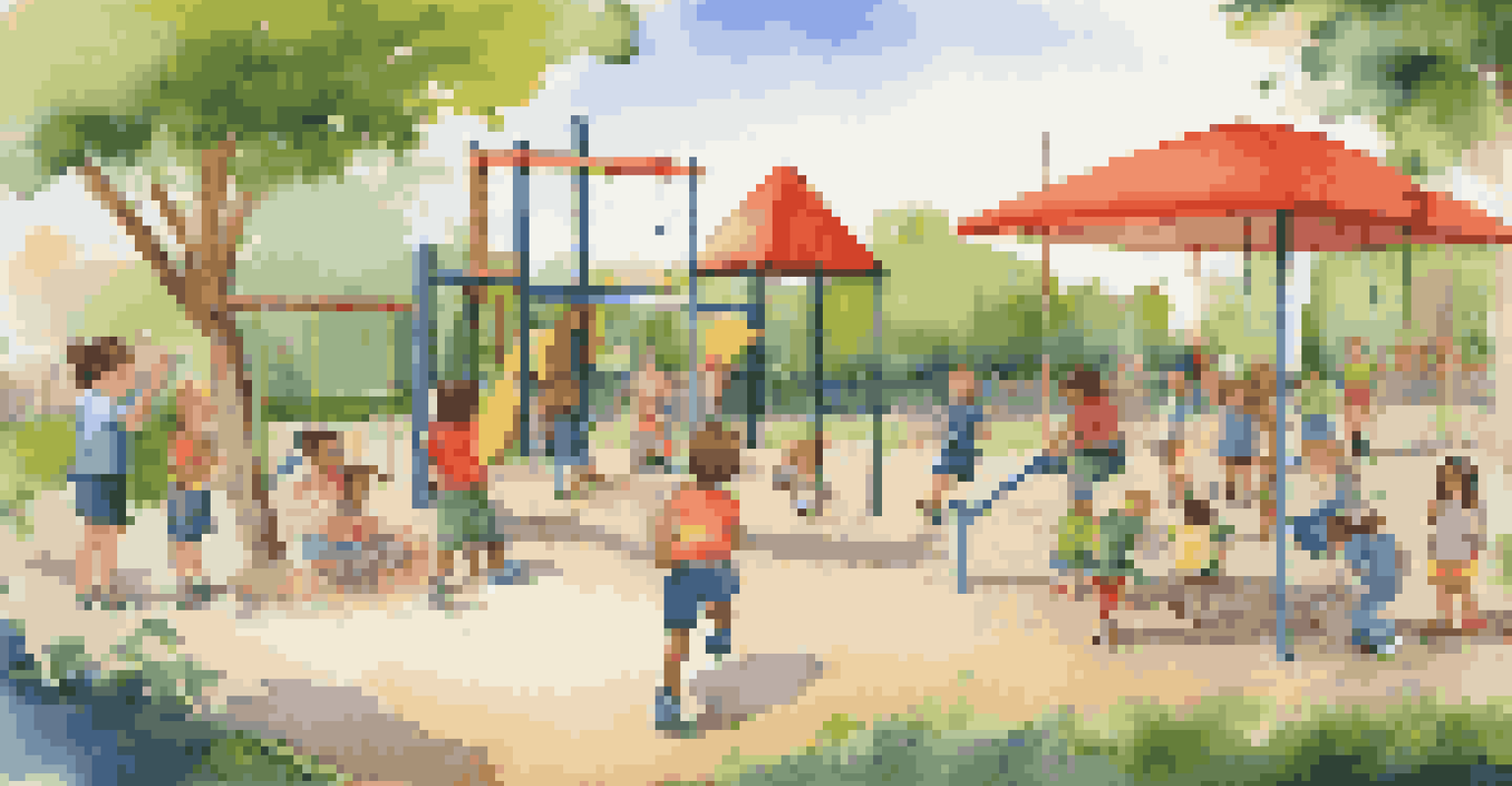Blended Learning in Early Childhood: Effectiveness and Models

Understanding Blended Learning in Early Childhood
Blended learning combines traditional face-to-face teaching with online educational resources. In early childhood, this approach can enhance engagement by integrating technology in a way that's fun and interactive. For young learners, this means accessing videos, games, and digital storytelling that support their development alongside in-person activities.
Technology is best when it brings people together.
This method recognizes the diverse learning styles of children and aims to personalize education. For instance, some kids may thrive with hands-on activities, while others might prefer digital media. Blended learning allows educators to cater to these individual preferences, ensuring that each child receives a well-rounded learning experience.
Moreover, blended learning encourages collaboration among peers. Children can work on group projects both in the classroom and online, fostering social skills and teamwork. This prepares them not just for school, but for a future where collaboration is key.
Benefits of Blended Learning for Young Learners
One of the standout benefits of blended learning is its ability to enhance engagement. Young children are naturally curious and easily captivated by technology. By incorporating digital tools into the learning process, educators can create a vibrant and stimulating environment that holds their attention and ignites their imagination.

Additionally, blended learning supports differentiated instruction. Teachers can use online platforms to assess individual progress and tailor activities to meet specific needs. For example, a child struggling with letter recognition might engage in targeted online games while others work on more advanced tasks, ensuring everyone is learning at their own pace.
Blended Learning Enhances Engagement
By integrating technology with traditional teaching, blended learning captivates young learners and makes education more interactive.
Finally, blended learning fosters independence in young learners. By using online resources, children can explore topics of interest at their own speed. This autonomy boosts their confidence and encourages a love for learning that can last a lifetime.
Effective Models of Blended Learning
There are several effective models of blended learning suitable for early childhood education. The rotation model, for instance, allows children to switch between different types of learning activities, such as group work and online tasks. This keeps the learning experience dynamic and varied, which is essential for maintaining young children's interest.
The future of education is not about technology; it's about how we can use technology to enhance learning experiences.
Another popular model is the flex model, where the teacher provides personalized learning paths for each child. This approach can be particularly effective in early education, as it allows for real-time adjustments based on each child's progress. For example, if a child excels in a particular area, they might be allowed to move on to more challenging content sooner.
Lastly, the enriched virtual model offers a blend of online learning with occasional in-person check-ins. This model is beneficial for fostering relationships between teachers and students while still leveraging the benefits of technology. It also prepares children for future learning environments that may heavily incorporate digital tools.
Challenges of Implementing Blended Learning
While blended learning holds immense potential, it also presents certain challenges. One significant hurdle is ensuring that all families have access to the necessary technology. Not every child may have a tablet or reliable internet connection at home, which can create disparities in learning opportunities.
Additionally, teachers must be adequately trained to integrate technology effectively into their teaching. Without proper training, there's a risk that digital tools might be underutilized or misused. Professional development is crucial to equip educators with the skills they need to blend traditional and digital learning seamlessly.
Educators are Key to Success
Teachers play a vital role in blending online and offline learning experiences, ensuring a balanced and effective curriculum.
Lastly, some parents may have concerns about screen time and its impact on young children. It's essential for educators to communicate the benefits of blended learning and how it can complement traditional methods. Building trust with families is key to the successful implementation of any new educational model.
The Role of Educators in Blended Learning
Educators play a pivotal role in the success of blended learning in early childhood settings. They are not just facilitators of knowledge but also guides who help children navigate both online and offline learning experiences. Their support is crucial in helping young learners develop the skills needed to thrive in a blended environment.
Moreover, teachers are responsible for creating a balanced curriculum that incorporates both technology and traditional teaching methods. They must carefully choose digital resources that align with learning objectives and ensure that they enhance, rather than replace, hands-on activities. This blend of approaches helps children develop a well-rounded skill set.
Additionally, educators need to foster a growth mindset within their classrooms. Encouraging children to embrace challenges and learn from mistakes is vital in a blended learning setup. This nurtures resilience and a love for exploration, which are essential qualities for lifelong learning.
Parental Involvement in Blended Learning
Parental involvement is crucial in blended learning, especially for young children. When parents are engaged, they can reinforce what their children learn both online and offline. This collaborative approach not only enhances learning outcomes but also strengthens the bond between parents and children.
To facilitate this involvement, educators can provide resources and guidance for parents. For example, sharing tips on how to create a conducive learning environment at home or recommending educational apps can empower parents to take an active role in their child's education. This partnership makes learning a shared experience.
Parental Involvement Boosts Learning
Active engagement from parents reinforces the blended learning experience, enhancing outcomes and fostering stronger bonds.
Moreover, regular communication between teachers and parents can help address any concerns or questions. By keeping parents informed about their child's progress and the tools being used, educators can foster trust and collaboration. This open dialogue is key to ensuring that blended learning is effective and beneficial for all students.
The Future of Blended Learning in Early Childhood
As we look to the future, blended learning is poised to play an increasingly significant role in early childhood education. With technology continuing to evolve, the possibilities for interactive and personalized learning experiences are expanding. This offers exciting opportunities for educators to innovate and enhance their teaching methods.
Moreover, the growing recognition of diverse learning styles is leading to a broader acceptance of blended learning models. Schools are likely to invest more in training for educators and resources for families, ensuring that all children can benefit from this approach. This shift is crucial for preparing young learners for a digital world.

Ultimately, the future of blended learning in early childhood will depend on collaboration among educators, families, and communities. By working together, we can create a nurturing environment that supports children's growth and development, ensuring they are ready for the challenges and opportunities ahead.